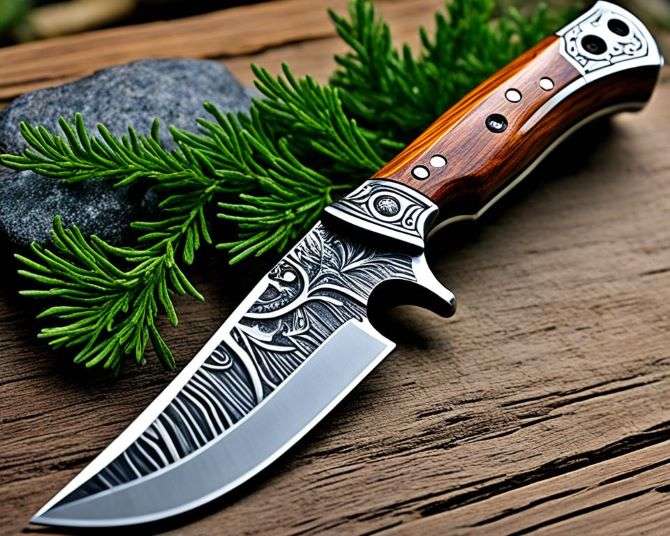Back Mastering the Art of Sharpening Your Custom Knife

We’ve all been there. You reach for your prized custom knife, the one with the handle that fits your grip like a handshake from an old friend. But as you attempt a simple tomato slice, the blade drags, tearing the fruit instead of gliding effortlessly. Disappointment washes over you. Where’s the razor-sharp precision you fell in love with?
Fear not, fellow knife enthusiast. A dull blade isn’t a sign of a bad knife; it’s simply a call to action. Owning a custom knife is a privilege, but to truly unlock its potential, you need to master the art of sharpening. It’s an investment in both the performance and longevity of your treasured tool.
Why Sharpening Matters
A sharp knife isn’t just about bragging rights (though a perfectly sliced tomato is undeniably impressive). It’s about safety, efficiency, and maximizing your investment A dull knife demands more muscle to power through cuts, making it easier to lose control and slip, potentially leading to injury. It also manhandles your food, crushing delicate tomatoes and tearing through herbs instead of offering clean, precise cuts.
Think of your custom knife as a high-performance car. Without regular maintenance, it won’t run smoothly or reach its full potential. Sharpening is the tune-up that keeps your knife operating at peak efficiency, making every task in the kitchen a joy.
Understanding the Science of Sharpness
Before diving into sharpening techniques, let’s explore what makes a sharp edge. It’s not just about removing metal haphazardly. It’s about refining the blade’s bevel, the angled edge that meets the cutting surface. This angle, along with the type of sharpening stone used. A steeper bevel angle (think a chef’s knife) offers more durability for chopping tasks. A shallower angle custom knives (think a paring knife) provides a finer edge for delicate slicing. The sharpening stone itself comes in various grits, with coarser grits removing more metal for initial sharpening and finer grits creating a polished, razor-sharp finish.
Sharpening Methods The Whetstone Way
There are several ways to sharpen your knife. Today, we’ll focus on the traditional and rewarding method – the whetstone. While it requires some practice, the control and results it offers are unmatched.
The first step is selecting the right whetstones. You’ll typically need two: a coarse stone (around 400 grit) for initial sharpening and a finer stone (around 1000 grit) for refining the edge. Soak the stones according to the manufacturer’s instructions, as some require water lubrication.
Now comes the key part: finding the correct sharpening angle. Most custom knives have an angle between 15-20 degrees per side. Hold the blade perpendicular to the whetstone and gently rest the spine at the desired angle.
Here’s where technique comes in. There are two main schools of thought – push strokes and pull strokes. Experiment and find what feels most comfortable. The key is maintaining a consistent angle and applying even pressure throughout the stroke.
As you sharpen, a tiny metal burr will form on the opposite side of the bevel.
Maintaining the Edge Between Sharpening
While whetstones are your go-to for major sharpening sessions, honing steel is a fantastic tool for maintaining the edge between sharpenings. Unlike a whetstone, which removes metal, honing steel realigns the microscopic edge without significant material removal.
Think of it like straightening a bent paperclip. With regular use (a few strokes before each use), honing steel keeps your blade performing optimally for longer. Just remember to maintain the correct angle and use smooth, even strokes.
Knowing When to Call in the Pros
Even with proper care, there will come a time when your custom knife needs professional attention. Signs of a dull blade include increased effort required for cutting, ragged cuts and difficulty with specific tasks like slicing paper-thin tomatoes.
For high-value knives, or if you lack confidence in your sharpening skills, consider seeking out a professional sharpener. A skilled sharpener will have the expertise and equipment to restore your blade’s edge to its former glory, ensuring your custom knife continues to be a cherished companion in the kitchen for years to come.
The Reward of a Razor-Sharp Edge
The satisfaction of using a perfectly sharp knife is unparalleled. Every slice becomes effortless, a testament to both the knife’s craftsmanship and your dedication to its care. It’s a dance between the tool and the user, a silent conversation where respect for the blade is rewarded with clean cuts and unmatched precision. You become an extension of the knife, gliding through ingredients with confidence, transforming food prep into a meditative act of culinary creation.
Conclusion
In conclusion, Invest in some whetstones or find a trusted sharpener, and unlock the true potential of your custom knife. With a razor-sharp edge, you’ll not only elevate your cooking experience, but also extend the life of your treasured kitchen companion.